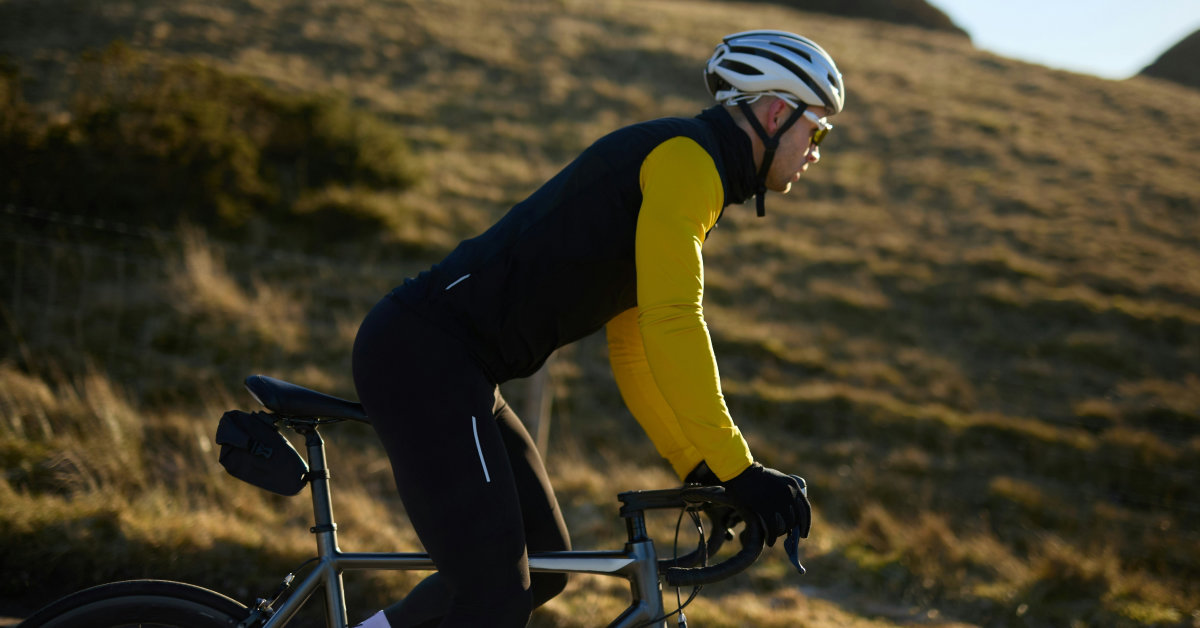Winter Cycling in South Africa: How to Train Smart and Stay Warm
The cooler days have already started to make their presence felt in South Africa and Winter is well and truly around the corner. This doesn’t mean that we all have to head indoors to get our time in on the bike. The irony of Winter in KZN and Gauteng is that the weather is often even better than in Summer for training. The cold, dry air is ideal for hours in the saddle without the threat of rain and very little wind. So, here are a couple of tips that will make the training enjoyable and productive through the Winter and have us coming out the other side ready to race.
Direction is important – As much as possible we want to plan our rides so that we finish uphill. Going out on a long ride with a predominantly uphill first half seems to be the obvious choice so that the route becomes easier in the second half when we are tired but, in colder temperatures we will build up heat as we climb at slower speeds which causes sweating. Then, coming back on an easier section of the route where we won’t be able to generate as much heat in damp clothes, can cause a drop in body temperature which will affect our performance on already tired legs and also increase our chances of developing respiratory illness. So, in Winter, it is always best to go out easy and come back hard, which is not a bad way to train to finish a race strongly anyway.
Direction is important ‘part two’ – Another factor to consider is wind direction. Unlike the question of gradient above, when it comes to wind we would prefer to go out hard and come back easy. So, heading out into the wind for the first half of the ride is preferable. Yes, we will be working a bit harder into the wind and travelling at slower speeds, much like the example where we discussed gradient but, we will have the cooling effect of the wind on our bodies which will minimise sweating. Then, when we turn with the wind it is easier to keep the pressure on the pedals than it can be on a downhill. Our clothes should also not be that damp from sweating and, riding with the wind tends to build heat as the cooling effect of the wind on our bodies is minimised.
Layer up – Starting out on a ride in Winter is always cold. So we need to dress accordingly. Our clothing choices should lean more towards numerous thin layers rather than less items that are thicker. For example, we would rather go for: a thermal undershirt; normal cycling jersey; thin sleeveless gilet and a light long-sleeved jacket than: a normal cycling jersey and a thick winter jacket. In the second option we are committed to the jacket throughout the ride because taking it off will be a significant change in warm clothing and a huge contrast to just a thin cycling jersey on its own. Additionally, where will we put the jacket? It will probably be too big to roll up and stuff into a pocket. In option one, we can remove the thin jacket once we have warmed up after only a few minutes and stuff that in a pocket of the gillet. That, in turn, we can remove and stuff into our jersey pocket once things really start to heat up still leaving us with two thin layers of clothing on. The multiple layers also work to keep the chill air off sweaty clothing. Once we have got into the meat of our ride, our sweat will be absorbed by the base layer. Our outer layer, the one that contacts the cold winter air, remains dry, thus reducing the amount of wind chill on our skin.
Timing is everything – When starting out cold, with our multiple layers, our body heat will gradually build as we exert ourselves. The idea is to remove a layer as necessary in order to maintain a comfortable temperature under our clothing. One that is warm enough for us to perform the efforts that we have planned efficiently but not so warm that we are uncomfortable and those efforts become compromised. Timing here is critical. We don’t want to leave the removal of a layer too late resulting in producing too much sweat and soaking the base layers which will then cause us to become cold again as soon as we remove an outer layer. Doing that too soon can have a similar effect. Taking off a warming layer while it is still necessary will slow down our warming up or prevent it altogether.
Practice dressing – This sounds silly but modern cycling clothing is highly technical and designed to, not only keep us warm but also to maintain aerodynamics as much as possible. This means that it fits very snuggly, is probably quite stretchy and the sleeve holes are narrow with very little margin for error. So, learning the most efficient way to remove or put on a jacket is a good idea to practice in the safety of our homes. Trying to do this for the first time while out on the bike could, at best, provide some comedy for our riding mates and passing cars or, at worst, result in an unplanned dismount at speed. A general rule is that a long-sleeved jacket is for starting a ride but once removed, it should probably stay off as getting our arms back in tight sleeves is troublesome. A sleeveless jacket or gilet is the go-to when we think that we will want to remove it while say, climbing a hill and then put it back on when going down the other side. It is much easier to get our arms through a sleeveless hole while travelling at speed.
There is an old adage that still rings true today… There is no such thing as bad weather, only bad clothing.





Leave a Reply